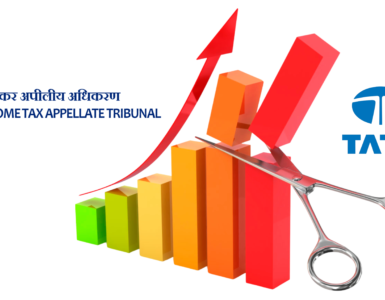Reduction of share capital is often resorted by companies for internal restructuring or altering their capital structure; it entails reduction of issued, subscribed and paid-up share capital (either equity shares or preference shares or both) of a company. The following are the most likely situations of capital reduction.
- Capital reduction without pay-out or
- Capital reduction with pay-out
- To all the shareholders
- To selective shareholders
Capital reduction without pay-out:
This normally happens when the company has accumulated losses and/or partly paid-up shares. This is used by companies to strengthen their balance sheet by adjusting losses incurred till date against share capital/other reserves. In those circumstances as there is no payout hence there are no tax consequences. A capital reduction scheme of Sagar Soya Products covered as an article in our June 2018 looks at this scenario.
Capital reduction with pay-out:
Advantages of capital reduction with payout for the company are:
- Easy to distribute surplus cash to shareholders.
- No limit for distribution like in buyback or dividend.
- As a consideration, Company may give assets to the shareholders which were not allowed in the buyback.
The capital reduction is provided by section 66 of the companies act 2013 and its taxability is provided in various provisions of the Income Tax Act 1961. We shall discuss regulatory and taxation aspects in case of capital reduction of equity shares.
Capital Reduction – Provisions under the Companies Act 2013
Section 66 of the Companies Act, 2013, provides that, for a company to reduce its share capital, it should have the power under its Articles of Association (AOA) to do so. Thereafter, a special resolution for reducing share capital must be passed by shareholders. Subsequently, the reduction effected by such special resolution must be confirmed by the National Company Law Tribunal (NCLT).
As generally understood, capital reduction is uniform for all the shareholders of the particular class. In this case, it can be compulsory for all the shareholders to abide by the order of the honourable NCLT confirming the special resolution of the shareholders for the size, amount and other terms of the reduction.
In this context, a question that arises is whether selective capital reduction is allowed or not? Even if it is allowed, whether it has to be optional or can be compulsory? whether in case of selective compulsory reduction from minority shareholders, it amounts to oppression of rights of the minority by throwing them out without their will, if they object to the resolution approving the reduction? Even if they confirm reduction, but want amendments to the terms of reduction more particularly valuation whether their objections can be considered by honourable NCLT?
Selective capital reduction means reduction of the share capital of some shareholders. It may be noted that the provisions of section 66 of the Companies Act, 2013, are very wide and the 2 clauses in section 66(b) of the Companies Act, 2013 are illustrative and not exhaustive. Furthermore, could such a selective capital reduction have to be optional in nature? i.e. shareholders get an option if they wish to tender their shares or not; usually, in most cases before Honourable NCLT in a capital reduction application/is “across the board; and, once approved by the NCLT, it is binding on shareholders whether they objected to the reduction or not.
Pursuant to section 230 (11) of the Companies Act, 2013, a member of the Company alone or along with any other members holds 75% shares in a Company, can file an application with the Hon’ble NCLT for acquiring any part of the remaining shares of the Company held by minority shareholders.
Pursuant to section 230(12) Aggrieved party can file an application before NCLT against the Application filed under section 230 (11) with the NCLT.
If the Application filed under section 230 (11) is approved by the NCLT, minority shareholders share will be transferred to majority pursuant to the order of honorable NCLT.
In past, several companies like Cadbury India Limited, Phillips India Limited, UTV Software, Atlas Capco etc used selective capital reduction as a tool to give exit to dissenting minority shareholders after delisting.
Capital Reduction: Provisions under the INCOME TAX ACT 1961
For Shareholders
Deemed Dividend Provision
The reduction of capital would first need to be examined from the perspective of deemed dividend under section 2(22)(d) of the Income Tax Act, 1961, which provides that, to the extent, the company possesses “accumulated profits”, proceeds of capital reduction would be considered as a deemed dividend. Obviously, under the new dispensation for dividend taxation, such amounts would be taxable in the hands of the shareholders, subject to withholding of taxes by the Company. To the extent that the amount of capital reduction exceeds the amount of accumulated profits, it would be taxable as capital gains in the hands of the shareholders. This was so held by the Supreme Court in G. Narasimhan [[1999] 236 ITR 327 (SC)], i.e. that any distribution over and above the “accumulated profits” would be chargeable to capital gains tax in the hands of the shareholders.
It is important to determine, as to what would be covered by the term ‘accumulated profits’. The term accumulated profits are not defined in the IT Act and the courts have interpreted the term in various judicial precedents.
The Supreme Court of India in the case of P.K. Badiani vs. CIT 1977 AIR 560 held that ‘accumulated profits’ are profits made by the company in the real and true sense and not merely assessable or profits liable to tax as a company distributes dividend out of its business profits and not out of its assessable income. Further, the explanation to section 2(22) of the IT Act provides that accumulated profits up to the date of distribution or payment should be considered.
The question also arises as in the case of Supreme Petrochem Limited where the company proposes to pay by reducing face value of the shares will be considered as deemed dividend under section 2(22)(d). Whether it will make any difference if the company have accumulated profit or not. In our view, to the extent the company possesses “accumulated profits”, proceeds of capital reduction would be considered as a deemed dividend under Sec 2(22) (d).
Selective capital reduction – context to accumulated profits
In the case of selective capital reduction there are two views in relation to accumulated profits:
- Accumulated profits to be considered for deemed dividend are linked with the proportion of value of shares held by the shareholders who accept the offer or
- Accumulated profits are not linked with the proportion of value of shares held by the shareholders who accept the offer.
Capital Gains Tax Provision
There is no specific provision in the Act dealing with this. However, the matter was settled by the decision of the Supreme Court in the case of G. Narasimhan [1999] 102 Taxman 66 (SC), wherein it was held that any distribution over and above the accumulated profits would be chargeable to capital gains tax in the hands of the shareholders. It was also held that reduction in capital will be construed as a transfer within the meaning of section 2(47) of the Act.
The charging section 45 read with section 48 of the Act requires the following for taxability of profits or gains from transfer of a capital asset as capital gains:
- The existence of a ‘capital asset’.
- There should be a ‘transfer’ of such a capital asset; and
Consideration should be received or receivable on transfer of such a capital asset.
Definition of ‘Transfer’
Section 2(47) “transfer” in relation to a capital asset includes:
- the sale, exchange or relinquishment of the asset; or
- the extinguishment of any rights therein;
The transaction must qualify as ‘transfer’ is one of them and it includes relinquishment of a capital asset or extinguishment of rights in the capital asset. In the case of capital reduction, the rights of the shareholders to the dividend on share capital and the right to share in the distribution of the net assets upon liquidation is extinguished proportionately to the extent of reduction in number of shares, thereby, qualifying as ‘transfer’ by way of extinguishment of the rights in the capital asset i.e., shares.
When the company has accumulated losses and/or partly paid-up shares in those circumstances as there is no payout hence there is no consideration is received by the shareholders, in that case, there is no reduction in any rights of the shareholders to the assets of the company as it is just an adjustment of losses with the capital, and nothing is flowing from company to the shareholders to compensate such capital reduction. Thus, there is no ‘transfer’ in that case.
Therefore, in case of capital reduction selective or not with pay-out tantamount to ‘transfer’ liable to capital gain tax.
To sum up, if capital reduction with pay-out and consideration is more than ‘accumulated profits’ of company then required to calculate capital gain.
Capital loss in hands of shareholders on account of reduction of share capital
The other issue that arises is whether in absence of any consideration or consideration lesser than investment amount being received by the shareholder on account of reduction of share capital, loss under the head Capital Gains can be claimed.
In this regard, the Special Bench of the Mumbai ITAT in Bennett Coleman vs. ACIT TS-580-ITAT-2011 had disallowed a shareholder’s claim for capital loss on reduction of share capital since the shareholder’s percentage of shareholding, immediately before reduction of share capital and immediately after such reduction, remained the same. Also, there was no consideration received by the shareholder in lieu of reduction of share capital and hence, the Tribunal termed the shareholder’s claim as merely a notional loss which was not allowed.
The Bangalore ITAT in the case of M/s Jupiter Capital Pvt. Ltd. vs. ACIT (dated 29 November 2018) allowed the claim for capital loss on account of reduction in share capital of the company. However, in this case, it is pertinent to note that the assessee received some consideration on account of capital reduction, which is a different fact pattern, as compared to the Bennett Coleman case (Supra) wherein no consideration was received. It seems that even in the Bennett Coleman case, there should have been a deduction allowed since clearly there has been a loss incurred even more so, since nothing is received. Take the other view which the Bombay Tribunal did, puts the shareholders at a substantial disadvantage from a commercial standpoint also.
We summarize above analysis with the following example: –
| Taxability | Scenario 1 | Scenario 2 | Scenario 3 |
| Accumulated Profit | 200 | 200 | NIL |
| Amount paid on Capital reduction | 100 | 250 | 100 |
Taxable Income
|
|
|
|
Applicability of section 50CA
Section 50CA provides for the fair market value (FMV) of shares as the full value of consideration in case of transfer of unlisted shares irrespective of actual consideration paid. For the applicability of section 50CA, consideration is must if consideration is absent/no consideration, then section 50CA may not apply. Further, when the distribution does not exceed accumulated profits, relying on the principles of the Supreme Court of India in the case of G. Narasimhan (Supra), there should be no tax implications under section 50CA of IT Act as this section is only for the purpose of calculating capital gains under section 48 of the IT Act.
Therefore, Section 50CA may not apply in case of capital reduction without any pay-out, as no consideration is received. However, in case of capital reduction with pay-out which is more than accumulated profits, section 50CA may apply. The question is whether the entire FMV of the shares shall be considered or only the FMV over and above the accumulated profits. On a plain reading of the section, it appears that the entire FMV must be considered, resulting in double taxation to the extent of accumulated profits. However, on the issue of double taxation the SC in Laxmipat Singhania V/s CIT, UP-1968 (8) TMI 8 held that “it is fundamental rule of law of taxation that, unless otherwise expressly provided, income cannot tax twice”. Double taxation may be permitted if expressly provided in law.
Taxing Statute should not be interpreted in such a manner that its effect will be to cast a burden twice over the payment of tax on the taxpayer unless the language of the statute is so compellingly certain that the court has no other alternative than to accept it. (Tata Steel & Iron Co., v. Union of India 75 ITR 676)
For Company
Applicability of section 56(2)(x) in case of capital reduction
In this context, it is important to note that in order to trigger chargeability under Section 56(2)(x) of the Act, the following conditions must be cumulatively satisfied:
(a) the recipient must ‘receive’ specified ‘property’ from another person; and
(b) the receipt should be for a consideration which is less than the FMV of such ‘property’.
However, in case of capital reduction, the shares are cancelled immediately on the scheme becoming effective. Therefore, in essence, the company does not receive any property and therefore, should not be subjected to tax. This view has been upheld in the context of buyback by the Mumbai Tribunal in the case of Vora Financial Services Pvt. Ltd. ITA No. 532/Mum/2018 as well. Further, the cost of the property which has been subject to taxation under section 56 has been specifically provided under section 49. This implies that for section 56 to apply, the property should remain in existence even after receipt, which necessitates providing for a cost for such properties in section 49. Based on the above arguments, one might possibly argue that section 56 should not apply to capital reduction.
Difference between buyback and capital reduction from Income Tax perspective:
There is also ambiguity around whether capital reduction can be considered as buyback of shares. Under section 115QA of the Act, the buyback attracts buy-back tax (BBT) on the difference between the buyback proceeds and issue price of shares by the company. Therefore, if capital reduction is classified as buyback, the company may be required to pay BBT on the same.
The following legal position needs to be considered whether capital reduction is or not buyback:
- Section 115QA deals with taxation on Buy-Back a. Explanation to section 115QA provides definition of Buy-back:
“buy-back” means purchase by a company of its own shares in accordance with the provisions of any law for the time being in force relating to companies. However, before the amendment, it referred to the particular section i.e. the section 77A of the Companies Act,1956 and not the Act. So, in one view reduction of capital also may get transaction covered under this section as The Act provides for the provisions relating to buyback and capital reduction.
- Taxability on capital reduction to the extent the company possesses “accumulated profits”, proceeds of capital reduction would be considered as a deemed dividend as per section 2(22)(d) and above accumulated profits taxable under capital gain tax as per Supreme Court decision in G. Narasimhan [[1999] 236 ITR 327 (SC)]. However, taxability of buy-back as deemed dividend is specifically excluded from section 2(22) of Income Tax Act.
- If capital reduction is also to be taxed under section 115QA, then section 2(22)(d) will become redundant, which cannot be the intention of law. But as 115QA is introduced recently and starts with non-obstante clause hence may be considered as overriding the earlier provisions.
The question arises that as in section 115QA specifically not mentioned as earlier. Can AO attract both section, section 115QA in the hands of Company and 2(22)(d) in the hands of Shareholders.
If one, consider taxability of capital reduction as per section 115QA then companies may distribute entire accumulated profits to the shareholders via capital reduction by paying lessor tax.
| Particulars | Capital Reduction | Buy-back |
| Taxability |
| Taxable under section 115QA at the rate of 20% plus surcharge/cess payable by the company |
| Consideration | Either Cash or kind both allowed. | Only in cash as per rule 17(10)(c) of Share capital and Debenture’s rule 2014 of the companies act 2013. |
Summing Up
Considering all the issues enlisted above, it is evident that capital reduction is easier said than done. One needs to look at it from multiple dimensions not limiting to corporate law provisions, accounting issues, FEMA aspects and tax, and a company intending to embark on this route need to clearly define its objectives and consider the implications of the Companies Act, 2013 as also the possibility of a regulatory roadblock. Recent amendments to the Companies Act, 2013 by notifications of Sec 230(11) and Sec 230(12) and amendment to sec 115QA has made decision making more difficult. But all the decisions referred to are before notification of Sec 230(11) and 230(12) of the companies act which provides proper scheme to give compulsory exit to small and minority shareholders.
Therefore, companies planning to undertake capital reduction should consider all the tax and regulatory implications carefully before proceeding.





Add comment